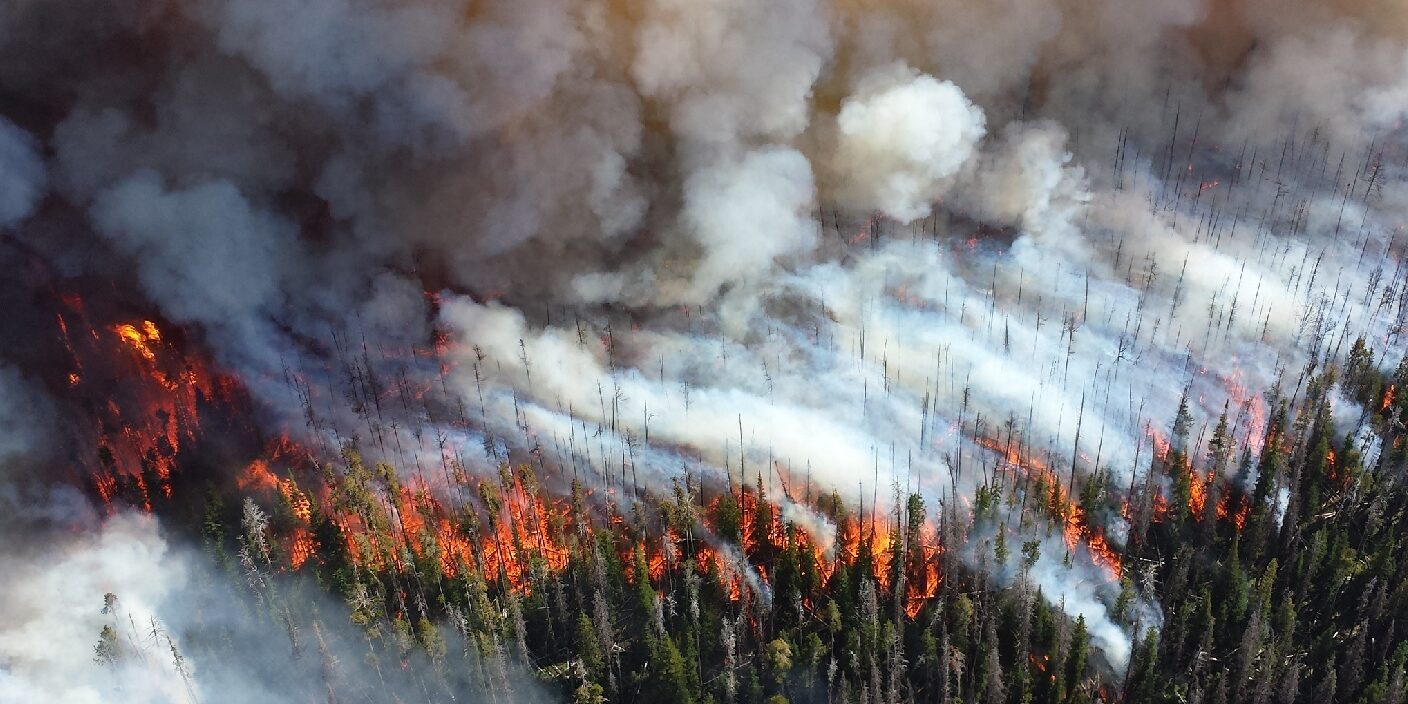- Denver Branch: (303) 320-7500
- Rocky Ford Branch: (719) 254-7469
-
Now Offering Delivery!

This year was especially devastating for many people across the western United States with a record number of forest fires. Our hearts go out to everyone affected by these fires. Arkansas Valley Seeds is working closely with land owners, the Forest Service, and Bureau of Land Management to assist in re-vegetation and habitat restoration efforts.
We created several new seed mixes for the areas in Colorado affected by the fires.
Cameron Peak
Planting Time
A good time to plant your native grass mix is early spring (mid-March to mid-May) when soil moisture is more abundant and temperatures cooler. Late summer/early fall (mid-August through September) can also be a good time but supplemental water would be necessary to get adequate germination. Dormant seeding in fall or early winter work well provide the soil is not frozen.
Site Preparation
Preparing a good seed bed is very important to ensure proper seed to soil contact and provide the proper growth environment. Rake, till or plow the site to loosen the top 3-4 inches (8-12 inches is ideal) of soil. Weeds or other undesirable vegetation should be removed or thoroughly worked into the soil. Apply a slow release organic fertilizer at a minimum rate of 400#’s/acre. The final seed bed should be smooth, free of large clods and firm. For sterile areas, a Micronized fungi (soil microbes) may be applied at 1#’s/acre to improve soil biology.
Biosol Forte applied at 400#/acre
Micronized Mycorrhizal Inoculant applied at 1#/acre
Seed Application
Drill seeding with a mechanical seeder is usually the most efficient method for larger plantings. Drill seeding ensures good seed-to-soil contact and is typically the planting method having the greatest likelihood of seed germination and establishment. Before use, your drill should be properly calibrated to ensure proper depth and have available multiple boxes to accommodate fluffy and/or small seed. A Truax or Laird drill are typically the industry standard. If drill seeding the site is not practical, the use of hydraulic equipment would be of second preference. Hydraulic mulch should be applied at a rate of 2,000 #’s/acre on relatively flat areas. A natural tackifers (plantago or guar based) need to be added to the mulch slurry during agitation to ensure the mulch is glued to the soil surface during application. Plantago based tackifers should be applied at 150 #’s/acre in the mulch slurry and guar based material at 50 #’s/acre. On slopes steeper than 3:1, a Bonded Fiber Matrix (BFM) would be the preferred hydraulic material of use. The BFM is applied at 3,500 #’s/acre. Regardless of using standard mulch or BFM, the mulch application should be performed in a two- step process. The first step is to applying a tracer amount of hydraulic product (300 #’s/acre) with your seed onto the soil surface to ensure good seed-to-soil contact. The second step is to shoot the balance of the hydraulic material over the seeded area to get the needed cover. An ocular estimate of 2,000 #’s/acre of mulch would equate to approximately 80-90 % coverage of the soil surface. The application of 3,500 #’s/acre of BFM would ensure 100 % of the soil surface is covered with hydraulic erosion control material. The longevity of standard mulch product is 3-6 months and a BFM 6-12 months. If a seeder or hydraulic equipment is not available or practical to use, applying the seed with a cyclone type broadcaster may work. Hand broadcasting can be done for small sites. Once the seed has been applied, rake or drag the site to cover the seed with 1/8 to 1/4 inch of soil. If hand broadcasting seed, a rate of 1.5 times the standard rate of application is suggested.
Mulching Using Straw
Applying a light layer (maximum 1/4 inch) of straw, native hay or other organic material on top of the seed bed greatly improves the chances of success, especially if no supplemental water is available. Mulching improves soil moisture and protects the seed from blowing away or being eaten by rodents and birds. Once applied, straw should be anchored to the soil surface using crimping equipment or a natural tackifier. If a natural tackier is used, the application rate should be 200 #’s/acre for plantago based material or 100 #’s/acre using guar.
Watering
The lack of proper moisture during establishment is the number one cause of failure of most seeding projects in the Semi-arid West and Central Plains. Providing supplemental water to the site greatly improves the success rate. The advantage of using native grasses is they can establish and persist with little to no supplemental irrigation. If supplement irrigation is available, watering can facility germination in a more timely fashion. Once plants are established, supplemental watering efforts are no longer recommended. .
Weed Control
Weeds grow and establish much faster and easier than perennial grasses and can rob the soil of valuable moisture during the establishment period. The best method of weed control is by mowing the site before the weeds can mature and set seed. Chemical applications are generally not recommended unless you can spot spray areas of heavy weed infestation. If flowers are is included in your native mix mowing during the establishment period may eradicate that desired component of your mix.
Establishment Time
Under proper growing conditions you should start to see grass growth in 4 to 6 weeks. If supplemental irrigation is provided, full development may be accomplished in 8 to 12 months. Without supplemental water and depending on the normality of precipitation, a native stand of grass typically takes multiple (up to 3) growing seasons to become fully established. It is generally recommended that grazing be deferred or only light use be allowed the initial establishment season. Remember, the more care and effort you provide initially will greatly influence the establishment time and success of your native planting.
098 S. 12th Street
Rocky Ford, CO 81067